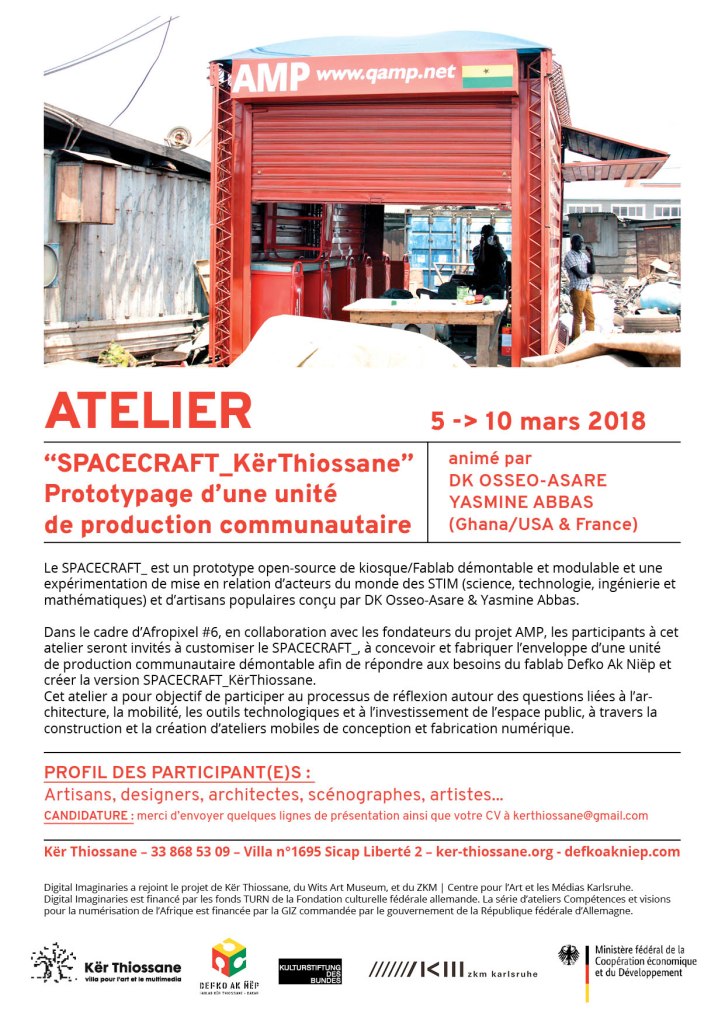
SPACECRAFT_KërThiossane Prototypage d’une unité de production communautaire


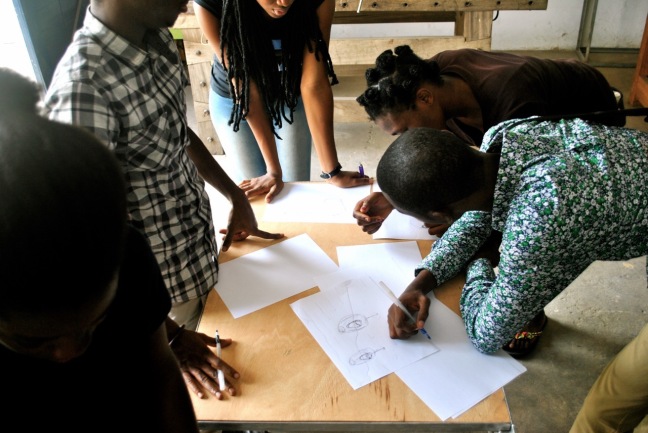
Finalists from Innovate Ghana‘s 2015 Design Challenge around problem areas of Water & Sanitation participated in a prototype design workshop at the Makerspace @Impact Hub Accra (December 19, 2015):
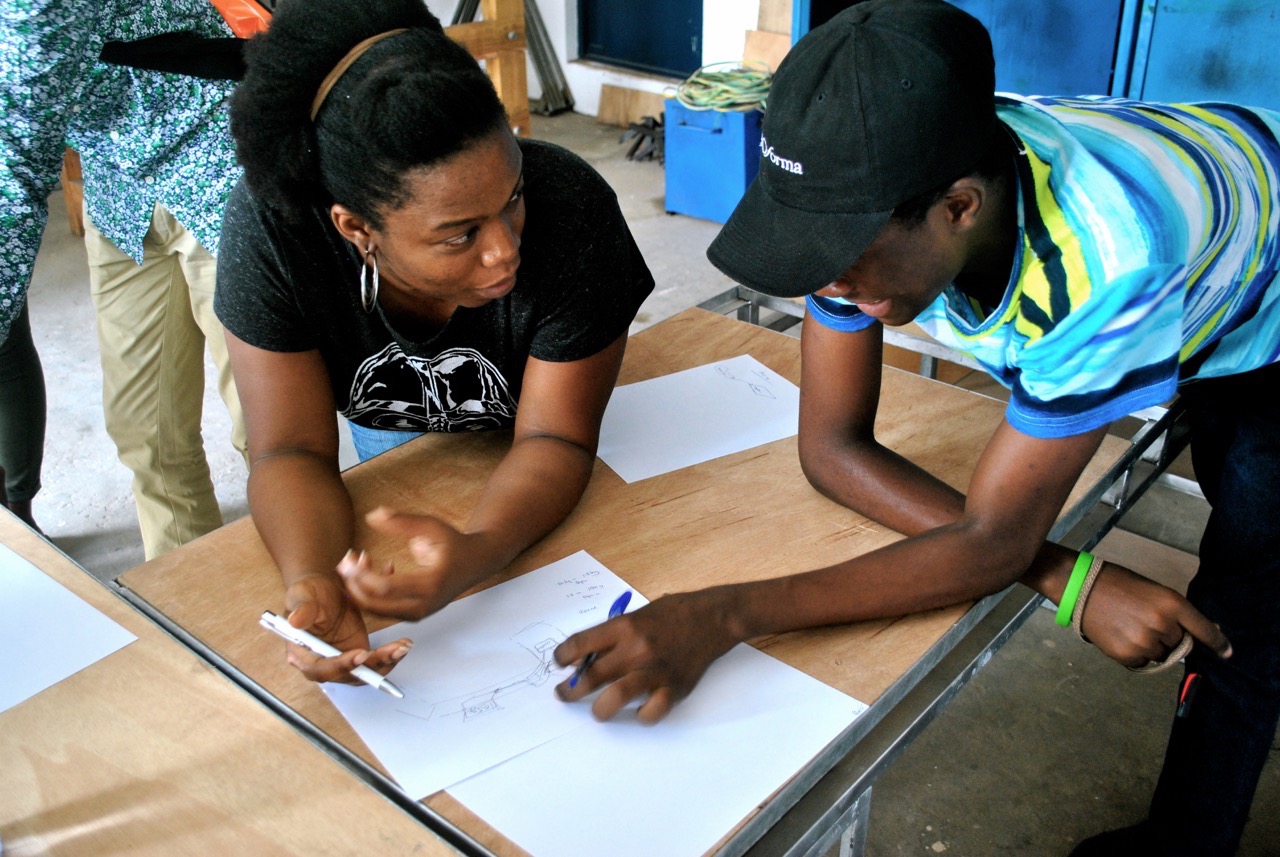
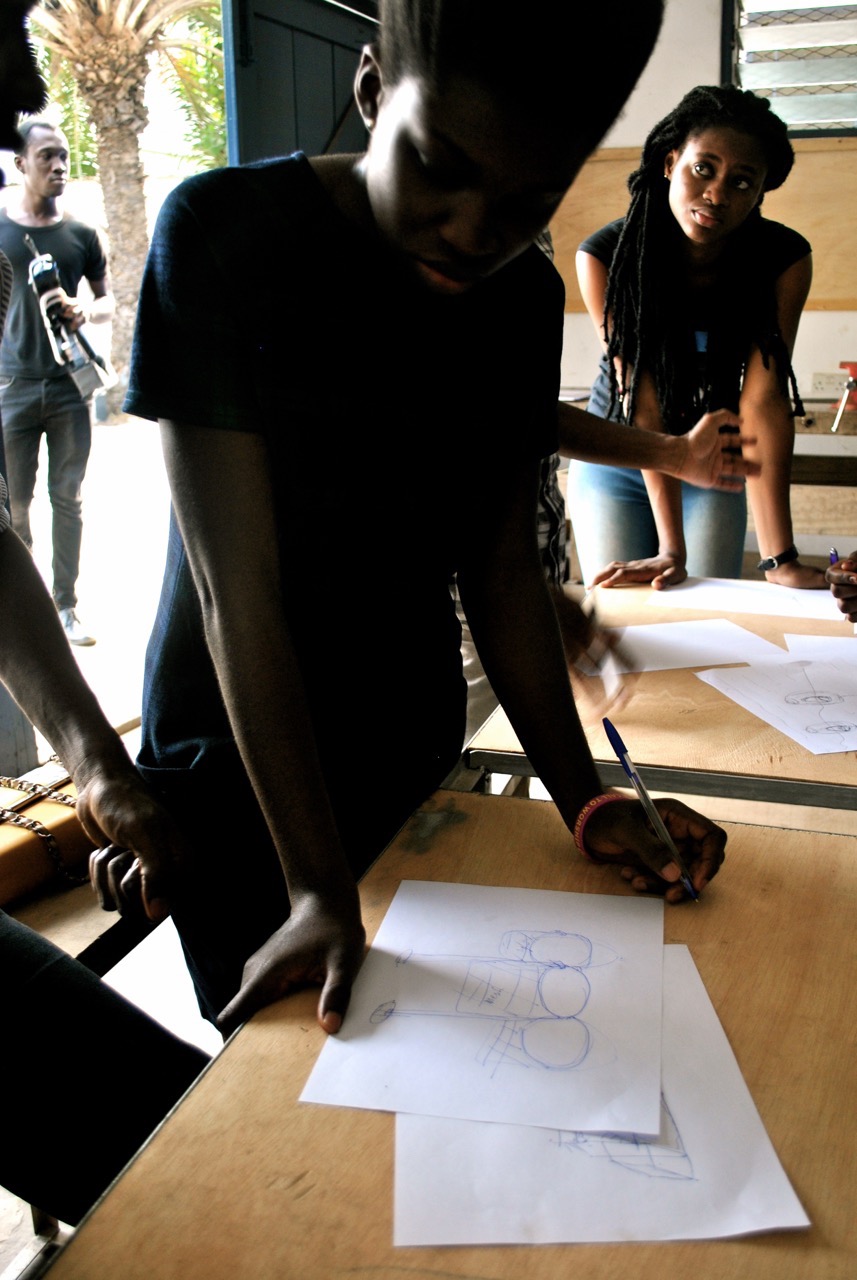
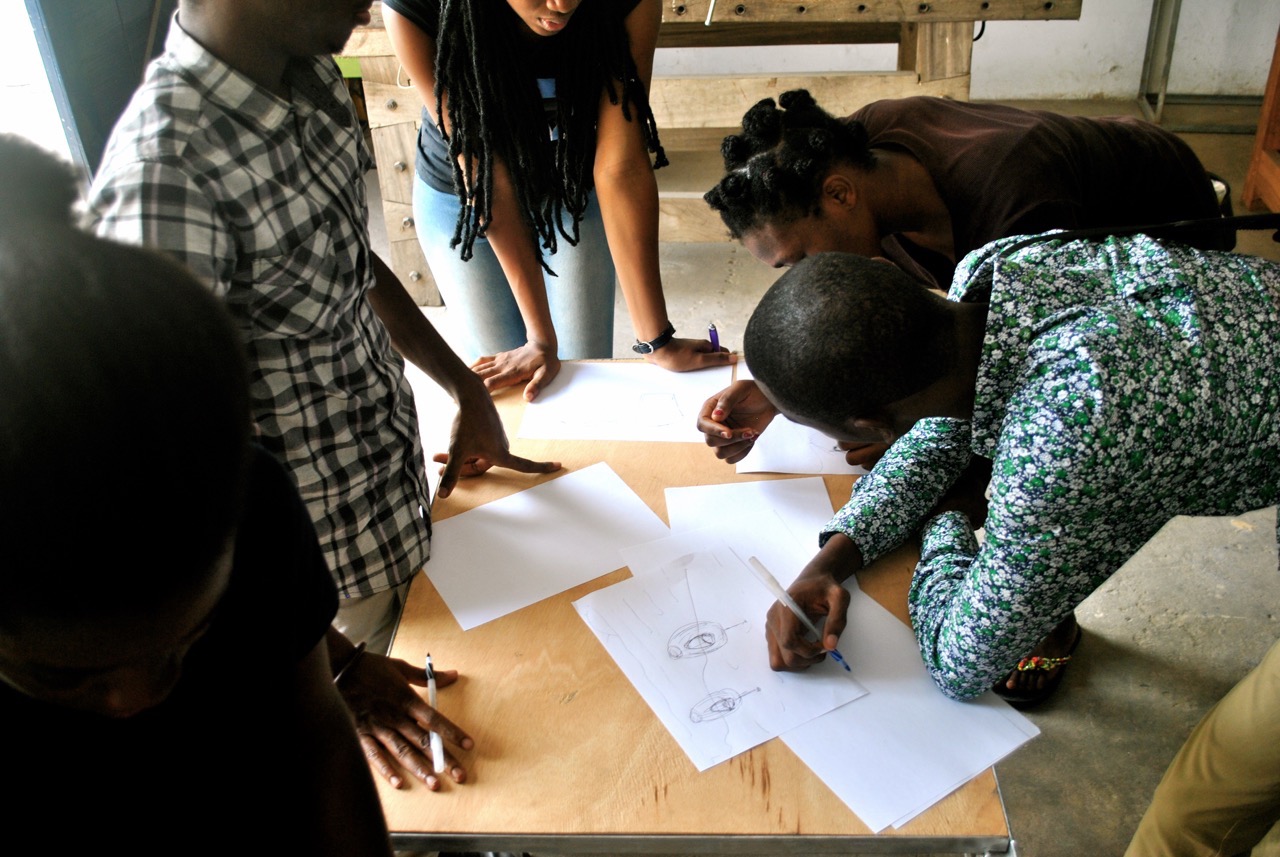
Then @kabsseidu & @afrocyberpunk showed up from Nubian VR and prototyped a VR camera rig:
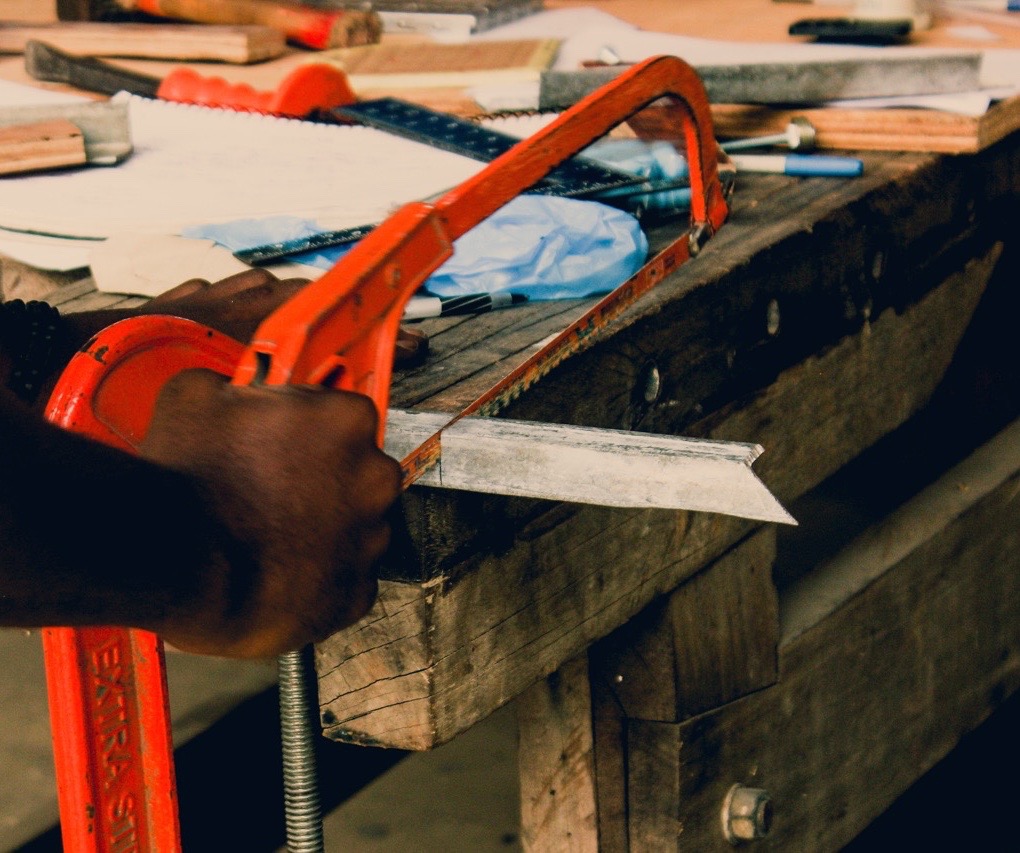
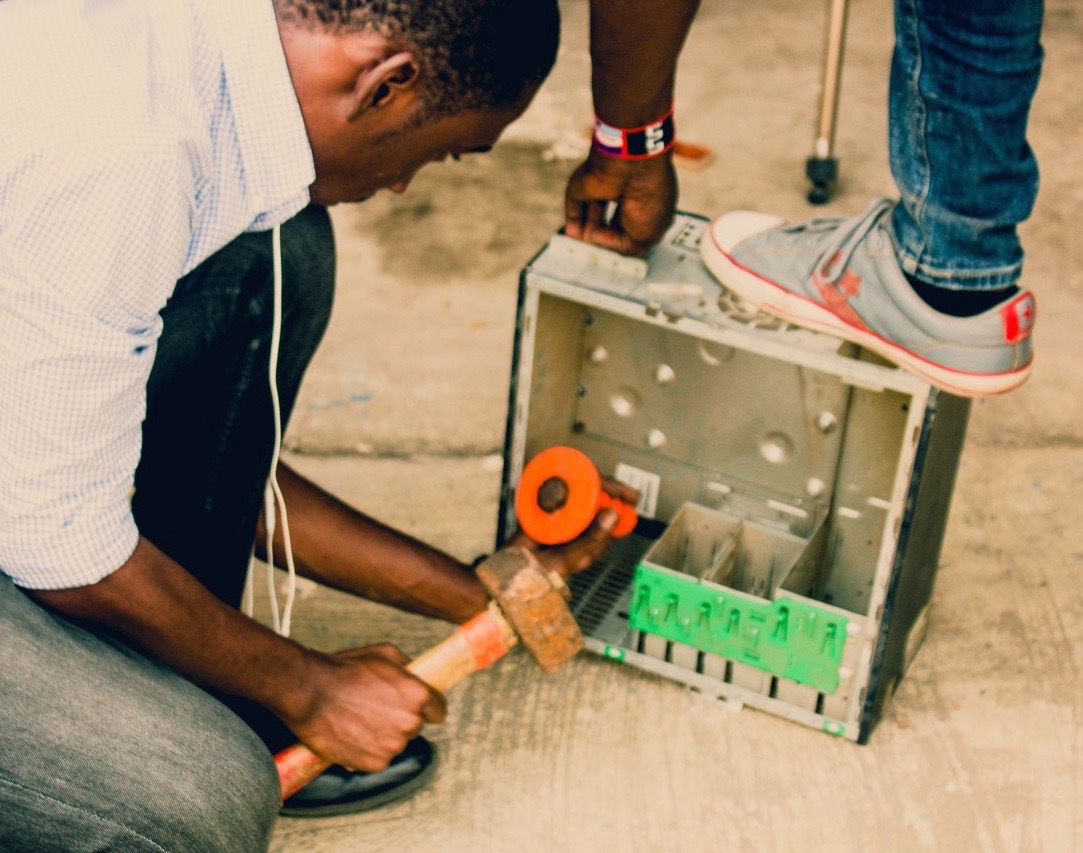
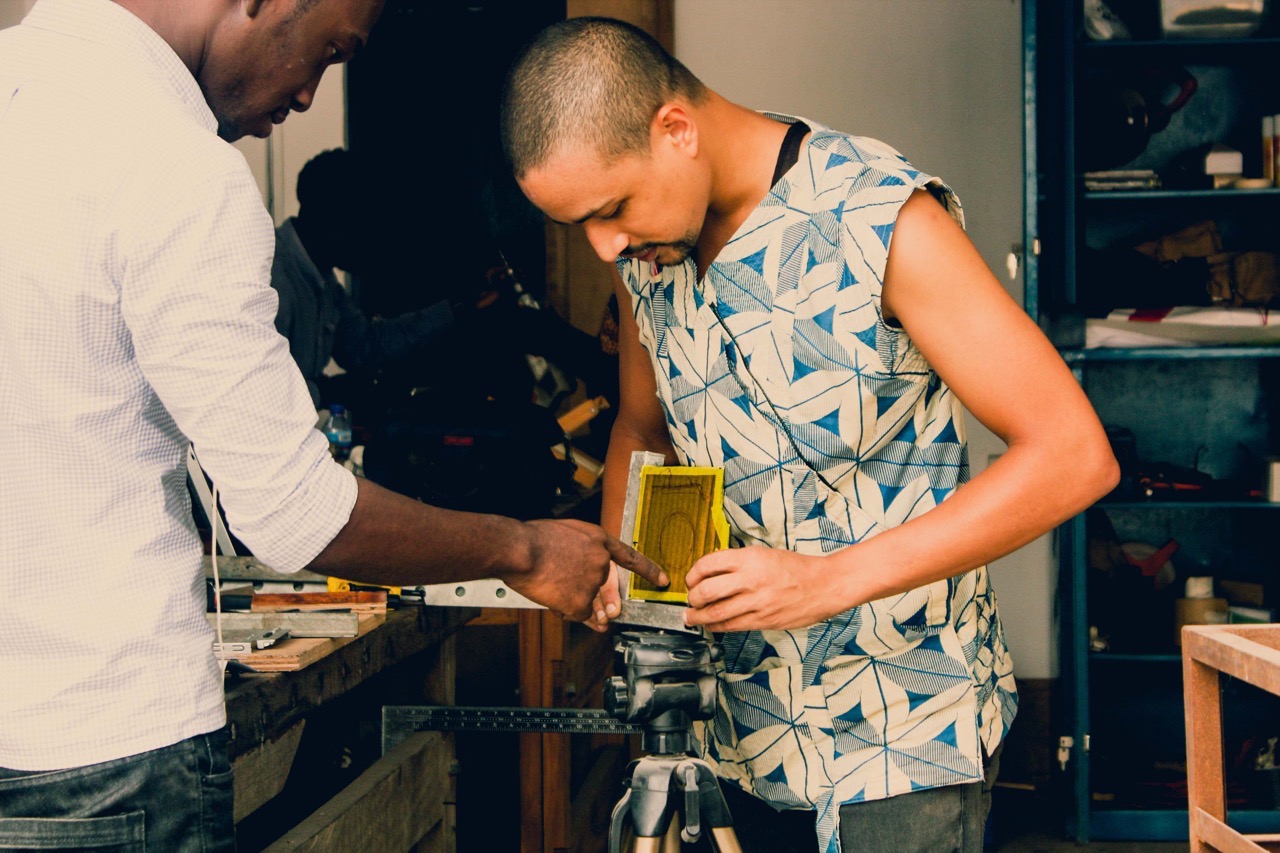
Students engaging in a debriefing session at the Hub Accra to talk about the sites visited @Ashesi @MCFoundation pic.twitter.com/TRAWnAwU0d
— Ashesi Design (@AshesiDesign) August 6, 2015
Talk on the concept of pyrolysis by @AmmaAninkora at Hub Accra. @Ashesi @MCFoundation pic.twitter.com/vuEYaYYyBQ
— Ashesi Design (@AshesiDesign) August 6, 2015

Could Agbogbloshie begin to supply low-cost upcycled computers to children in Old Fadama? Could this scope expand beyond this territory to other parts of Accra and to the under-privileged in Ghana? Could this net expand to cover the entire African continent? Imagine upcycled computers, supplied to all parts of the world from Agbogbloshie. There is a promising future for this and needs to start somewhere.
As part of engaging the Agbogbloshie community and STEAM professionals, AMP organized a ‘maker workshop’ to teach e-waste workers how to make a Jerry and install software on it. After a rainy morning, the AMP team arrived in Agbogbloshie in the afternoon. Most of the work-spaces in the scrap yard were partially flooded. Being Friday, and a majority of the e-waste workers being Muslims, they had just arrived from the Friday afternoon prayers. Since prior arrangements had been made with Sam Sandow (AMP agent in Agbogbloshie) and Zack (E-waste worker), the workshop started in one of the computer shops in Agbogbloshie located near the entertainment center. It is owned and operated by the Nigerian called ”Emeka”. The very same person from which components were sourced for the Jerry workshop in Kokrobite. The shop has shelves on which one would find hard drives, mother boards, circuit boards and many others.

Upon arrival, the team pitched tent and Daniel (AMP intern from creativity group KNUST) briefly introduced the Jerry concept to the community. After we explained the concept to Emeka, a monitor, keyboard and mouse, were made available for us to use. He also gave us a compact disc (CD) with an operating system. The team installed it and allowed the participants to familiarize themselves with the Jerry whilst interactively exchanging ideas with the AMP makers collective.
It’s highly informative and exciting to think that, these same e-waste workers who are among the most marginalized and least literate are actually computer literate- and that some of them are even self-thought. This reveals how much youthful potential is being lost to class stereotyping and the resultant marginalization.
The team later presented the concept of the Quadcoper to the workers by Samuel Amoako (AMP intern and student from KNUST). It was then flown on the football field to demonstrate how it will help AMP map Agbogbloshie and also monitor air pollution levels.

All through history, some of the most fascinating discoveries have come about as a result of conversations between two unlikely parties or people from highly divergent backgrounds who would ordinarily not interact. The creation of a community space where such interaction can happen and spark new genius via the crafting of the ground breaking ideas and objects is one of the central objectives of AMP.
As usual, the workers were busy with their activities: dismantling, loading trucks with scrap metals etc… but some were able to spend time with us and expressed their interest in making one themselves. One of the common questions asked was..whether the plastic will melt when the computer overheats? We answered them by discussing the physical properties of the type of plastic used, such as its melting temperature which is about 130oC and it’s combustion point which is between 340oC to 380oC. Another major concern was the market for the product and the price one should be sold. In effect they appreciated the fact that, parts of old computers can be sourced and used to make a server that works and are cheaper. The AMP team hopes to transfer the knowledge in assembling Jerry computer to making a Jerry Laptop (‘JerryTop’) in the near future.
The AMP team guided Archibots: Remaking Agbogbloshie design participants through Agbogbloshie by first introducing them to the the executives of the scrap dealers’ association. We proceeded through Rauf’s shop, where large volumes of refrigerators are processed, to the National Youth Authority Building, through dismantling and processing sites, past the areas where copper cables are burnt and all the way to the plastics recycling sector near the International Central Gospel Church.
Back to Hub Accra (thanks for hosting us!), the fun could begin! After hearing a brief introduction about AMP (DK Osseo-Asare, AMP co-PI) and the objectives of the design workshop (Juliet Sakyi, TAP: Build founder), participants brainstormed about possible architecture robots for Agbogbloshie and its population. Sam Yusuf, who hails from Agbogbloshie and currently works with AMP on interviews and GPS mapping, also attended in order to share some of the ideas with informal sector community. MESH has prepared a video showing highlights of the event.




Amongst the multitude of ideas that emerged, participants chose to pursue investigating the following: SMOKEYBOT – a robot that reduces the smoke in Agbogbloshie by grinding and processing copper wires ; SOLARBOT – a mobile tent, with a capacity to harvest solar energy, detect light and intelligently self adjust to provide conducive working environments ; SPIDERBOT – a zoomorphic robot with the ability to collect, transport and process large volume of e -waste at a time and a POWERSUIT – an apparel for humans, with the capacity to read, interpret and transmit biological data to the wearer, boost physical performance and contain computing capacity.
Teams self-organized once more to each tackle one of the 4 ideas selected. In the future a swarm of similar architecture robots could be used to terraform the electronic landscape…
So the adventure isn’t finished yet… Participants have expressed their interest in following-up with M&D – Making and Development. AMP is actually formalizing a 3 week summer workshop, so stay tuned!
The turnout was awesome and we thank all participants for coming and our partner organisations MESH and Tap for their support and contributions.
The first session of the Archibots workshop came off as scheduled on the May 30th 2014. The event was well attended by people from various disciplinary backgrounds. There were engineers, architects, CAD technicians, business men & women and lecturers as well as from various nationalities, such as Spain and the Netherlands. This was the introductory session for Archibots, a design workshop to prototype architecture robots for Agbogbloshie. As part of the event, all three collaborating organizations (tap, AMP and MESH) made presentations on what they do. AMP co-lead DK Osseo-Asare, introduced participants to Agbogbloshie E-waste circuitry, which is the context for the architecture robots to be designed and the key design concepts as far as AMP is concerned. Some of the videos that were selected to provide inspiration for participants can be found here . The team is eagerly awaiting the next phase which is the design session scheduled for June 7th 2014 at Hub Accra. This promises to be just as exciting as the May 30th event. Thanks to our friend and ally, media partners MESH Ghana for compiling footage of the event, which can be found at Archibots: Remaking Agbogbloshie.

For the past few months, the AMP team has engaged e-waste workers within Agbogbloshie. This time, on Saturday the 26th of April, the team organized its latest workshop intended to initiate the conversation with the STEAM world, who form a critical part of the AMP platform. Eventually, these professionals will come together with the e-waste workers and makers in Agbogbloshie to form the AMP makers collective. The knowledge that these professionals bring to the Agbogbloshie site will be useful for achieving AMP targets such as empowering makers to handle e-waste according to best practices and enabling makers to upcycle e-waste into value-added products.
The agenda was to:
The workshop took place at the lower lecture hall of the Physics department in the University of Ghana, Legon. Students from the host physics department, as well as chemistry, computer science and psychology students attended. There were also students from the architecture department of the Central University College. In all, there were 50 participants.
The workshop started with an introduction of the AMP team, followed by an interactive session, during which members of the AMP team engaged in conversation with the students.
After the interaction and lecture, participants were divided into four groups and made to work on the various projects. Each team documented the brand, the year of manufacture, and all other information they considered relevant. They were required to state to the best of their knowledge, which components were in the equipment and to what other uses these could be put.
We discovered that students from the physics department in particular had a fundamental awareness of the nature and uses of parts, as well as how these contributed to the total functioning of the equipment. After this session each team presented its findings to the larger group of participants.
Upon the completion of the workshop, participants by way of evaluation, passed on comments such as:
The program was insightful and inspirational. I am very happy I came and met other brilliant students and how they agitated minds to think critically. A great experience that will stay with me a long time.
A successful workshop in my opinion. I learned a lot and I am happy to know that such great ideas are being implemented. As I leave, my mind is racing through ways I can contribute to this positive revolution.
See photos on Flickr : STEAM Photos
Here are a few pictures from the first qamp, held yesterday under an “abrofo nkatie” (tropical almond) tree in Community 18, Tema. We discussed several projects that relate to teaching and learning about the environment in informal contexts.
Rene Neblett, Founding Director of the Kokrobitey Institute presented the flash card-based curriculum on environmental education that she has developed as supplement to her initiative Ghana School Bags, which recycles billboards and other waste plastic materials into locally-made backpacks for school children in Ghana. “P is for pollution…..”
Dr. Victor Atiemo-Obeng, a chemical engineer who recently opened the Ghana office of Dow Chemical Company, where until recently he served at the rank of Dow Fellow, gave an introduction to the concept of turbidity – a measure of the number of particles suspended in a given fluid, an important aspect of water quality – and how to measure it. We took samples of water from various sources – but have to wait 48 hours to observe the results. He also explained the science behind bio-sand filters such as Hydraid, a low-cost water filter available locally in Ghana.
The science behind water quality is critical to understanding the e-waste ecosystem. Bio-sand water filters can eliminate pathogens such as bacteria, viruses and spores but not contaminates like heavy metals which can be found in e-waste dump sites like Agbogbloshie.
Hassan Salih gave an update on Accratopia (also a Facebook group), a collaboration of architects, artists, illustrators, photographers, poets and other creatives to explore the potentials of Accra’s urban future as utopia. What can a remade Agbogbloshie look like after its post-apocalyptic present?